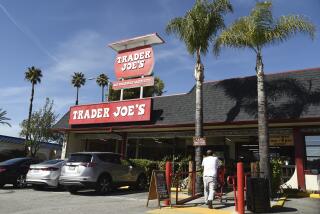What does that Thanksgiving meal cost?
Just a smidgen more.
The oft-heard phrase for second helpings at the Thanksgiving table applies equally to the cost of the meal. The tab for the feast edged up less than a dollar from last year, and has increased about $21 since Ronald Reagan was midway through his second presidential term.
Don’t blame the turkey, which got only slightly pricier because of an outbreak of avian influenza in the Midwest last spring, nor the pumpkin pie filling, which has grown scarce because rains spoiled the harvest in Illinois.
The leading role in every Thanksgiving story is energy, which drives the cost of agricultural commodities more than any other factor, agricultural economists say.
“Energy is a component of the retail price of pretty much everything — including food — so when energy costs are high, prices tend to go up to cover that,” said John Anderson, deputy chief economist for the American Farm Bureau Federation, which has tracked the cost of the same Thanksgiving ingredients for 30 years. The federation’s feast for 10 came in at $50.11 this year, up 70 cents from last year.
The sharpest price bumps in the annual meal’s cost were in 2007 and 2011, after weather-related drops in grain production piggybacked on long-range trends, according to USDA researchers.
Commodity price inflation over that decade was driven by rising energy prices and growth in population and per capita income, led by China and India’s burgeoning middle class. Increased diversion of food crops for biofuel, such as U.S. corn and Brazilian sugar for ethanol, were among the nation-by-nation policy decisions that also affected worldwide commodity prices, the U.S. Department of Agriculture said. The depreciation of the U.S. dollar from 2002-08 and slower growth in agricultural productivity also influenced prices, the USDA found.
Bottom line? The second helping won’t hurt your budget as much as the drive home will.
geoffrey.mohan@latimes.com







